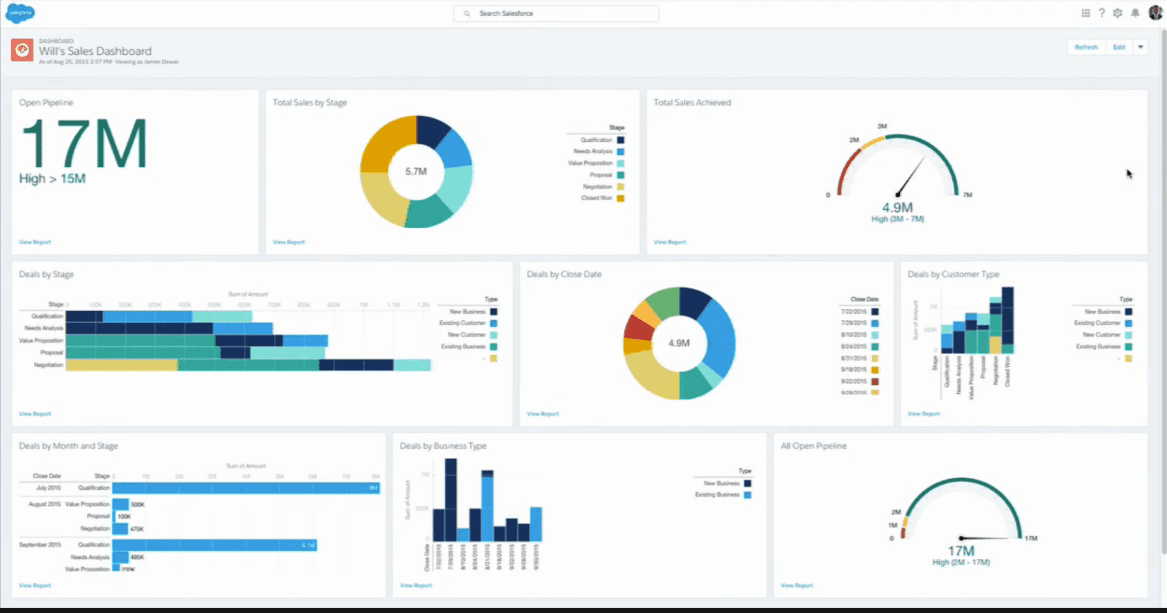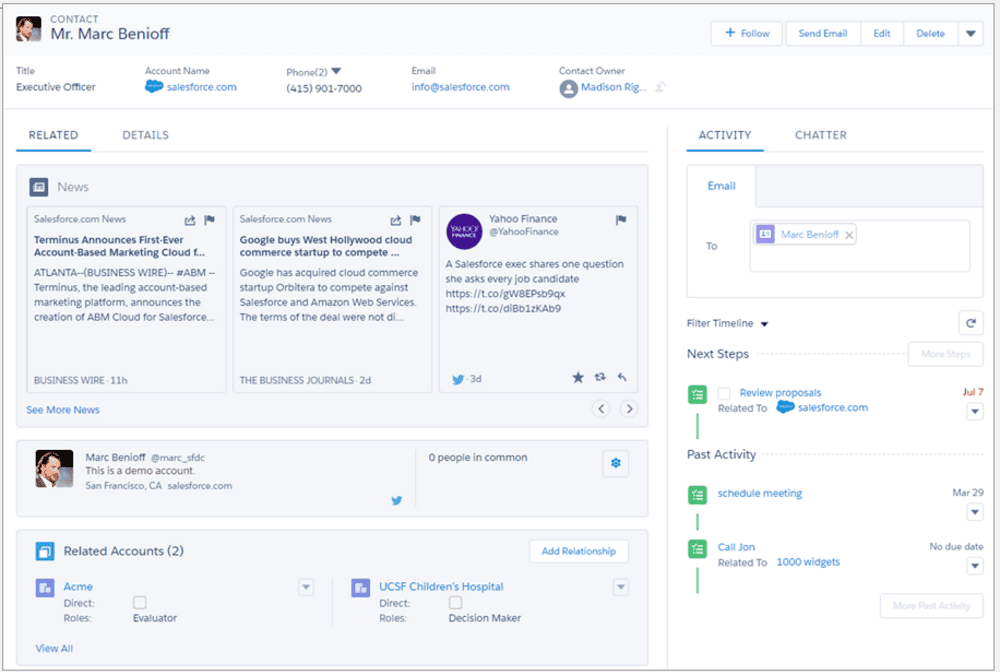Take Salesforce Lightning by Storm — Is Your Organization Ready?

If your organization runs Salesforce, then you’ve probably heard about Salesforce Lightning, the newer, decidedly more sexy user interface for the world’s #1 CRM.
With each new release of Salesforce over the past couple of years, we have seen more and more focus on Lightning. And we’ve learned that it’s not just a new UI. Salesforce has overhauled the underlying platform, giving customers the ability to build beautiful, responsive applications.
If you are like a lot of companies who use Salesforce, you’ve watched these developments with interest, but for the most part you’ve decided that it’s just not the right time to invest resources in migrating to Lightning. And I get it – the “Classic” experience is working just fine, so why fix it? Right? You might want to think again.
IN THIS ARTICLE:
- Benefits of making the switch to Lightning
- Lightning vs. Classic: Key challenges and limitations to consider
- Tips on change management
- Helpful resources to jump-start your migration
A Modern CRM. Not just a pretty (inter)face.
The first thing you’ll notice about the Lightning Experience is the updated user interface. A quick look at the Home page in Salesforce Classic versus Lightning Experience highlights some of the aesthetic improvements. Fonts and colors are more modern, and the flexible size and arrangement of “components” makes much better use of available screen space. This reduces the need to scroll down the page, since elements in the new UI are not required to be vertically stacked.
Home Page: More useful and customizable
In Salesforce Classic, the Home page was nothing to write home about, and the layout and content were not very customizable.
Home pages in Lightning are much more useful. For example, the default Home page for Sales displays a rep’s closed opportunities charted against quota for the quarter, alongside a handy Assistant which serves up actionable items to help process new leads and move open opportunities through the pipeline. A dynamic News section keeps reps up to date on news affecting their customers. Bonus: With Lightning App Builder, you have the ability to create customized Home pages for different profiles.
Record Pages: Dynamic, actionable data and less scrolling
Lightning Experience leverages this more flexible UI to serve up dynamic, actionable data across all types of pages, empowering users and increasing productivity.
For example, record detail pages in Salesforce Classic follow a very prescribed format: the record name appears at the top; fields are displayed in two columns broken up by vertical sections; and all related lists appear at the bottom of the page.
With Lightning Experience, record page layouts are more compact (less scrolling!). Most standard objects, including Accounts and Contacts, use tabs to group Activity and Chatter together in the right-hand column.
Related records appear in a tab in the main part of the page, alongside the Details tab which displays field data. A customizable Highlights panel displays key fields at the top of the page. Accounts and Contacts include current News items in the Related tab.
Custom Pages: Create with drag and drop components (not code!)
Salesforce provides default record layout pages for standard objects in Lightning. These are designed to maximize the user’s productivity. But users can take this a step further and design custom record layout pages using drag and drop components in the Lightning App Builder. This type of UI customization simply could not be done in Salesforce Classic without heavy coding.
You can also use Lightning App Builder to easily design custom Lightning Pages (choosing from a variety of templates) and display them as a unique tab or as a landing page for an App. No coding required!
Reports and Dashboards: More modern and flexible
With Lightning, dashboards are no longer limited to three static column widths. You can add up to 20 dashboard components in up to 9 columns, resizing individual components as desired to best fit the component’s data set.

Reports have received a facelift and productivity enhancements, too. Users can add report filters on the fly, without having to redesign the report. A huge time-saver!

OK, the UI is better, but is that enough of a reason to switch?
Remember, it’s not just a new UI. It’s a new, modern platform. And Salesforce is investing heavily in the platform. That means as new features are added, the primary focus will be on adding them to the Lightning Experience. If you don’t jump on the bandwagon now, you will be left behind.
If that’s not enough, here are some more reasons that should entice you:
1. YOUR SALES TEAM WILL LOVE THE SALES CLOUD FEATURES UNIQUE TO LIGHTNING:
As mentioned, a redesigned home page displays quarterly performance, opportunities needing attention, newly assigned leads and overdue tasks.

Opportunity Kanban shows opportunities in all stages, separated by record type; allowing to drag and drop between stages and take appropriate action without leaving the board.
Sales Path provides guidance for each stage of an or lead, and only displays relevant fields for the stage. This reduces clutter and simplifies data entry.

Salesforce Lightning now provides one interface across all platforms – phone, tablet and desktop.
2. ALL USERS WILL APPRECIATE THE DYNAMIC NEW UI AND PRODUCTIVITY ENHANCEMENTS:
Saving data in one component on a page automatically updates other components, saving the user from having to refresh the screen or navigate to a different screen. Close a task with one click or change a task’s due date without ever leaving the Activity Timeline on a record.
Be more productive with List Views, which feature editable filters and embedded charts. Another huge productivity enhancement! Create a Calendar from any object, like an Opportunity. Create a favorites list, and add favorites: for example a record, list, group, dashboard or something else you like. Hard to believe this was never part of Salesforce Classic.
3. YOUR DEVELOPERS WILL BE EMPOWERED TO QUICKLY AND EASILY CREATE MODERN, RESPONSIVE ENTERPRISE APPS AND DELIVER THEM ACROSS DEVICES.
Instead of building applications from scratch, developers can use the Lightning App Builder to drag-and-drop and easily configurable Lihtning Components onto a Lightning Page.

Mix and match Salesforce’s standard components, your own custom components and third-party AppExchange components, which are reusable across applications.
4. YOU’RE ALREADY PAYING FOR IT. THERE IS NO ADDITIONAL LICENSE COST FOR SWITCHING USERS TO LIGHTNING.
SO WHAT’S STOPPING YOU?
Fear of the unknown
Hopefully this article has helped you understand more about how Lightning can benefit your users and organization. But Lightning Experience is not without limitations. Fortunately, Salesforce is very transparent about these.
With each release, more and more functionality is “Lightning Ready”. The list of unsupported features is now respectably short. Sales Cloud is ahead of Service Cloud, so consider a limited rollout to your Sales and Marketing teams. Then plan on moving service agents later.
WANT TO KNOW EXACTLY WHAT’S SUPPORTED AND WHAT’S NOT? HERE ARE SOME HELPFUL RESOURCES:
- This Trailhead module includes an easy-to-read feature comparison chart
- Here’s a full list of limitations/considerations
- Learn what works and doesn’t work when migrating your Visualforce pages to Lightning
- Learn how Lightning Actions can replace your custom JavaScript buttons
- See what’s on the Roadmap for Lightning
- Note: Not all AppExchange apps are Lightning Ready. Check with your third-party AppExchange partners to learn more.
- This is truly a valid concern. Luckily, you don’t have to dive in head first. Salesforce makes it easy to dip your toe into the water.
- You have flexibility in designing your rollout plan, since you can roll out to a specific profile or even individual users.
- Users can easily toggle between Lightning Experience and Salesforce Classic, even after rollout.
- Your Salesforce Administrator can support users on both Lightning Experience and Salesforce Classic, since changes in Classic will not have to be replicated for Lightning Experience. Supporting both UIs does not mean double work for the Admin.
Won’t it be a lot of work?
It depends. Salesforce has designed Lightning Experience to support most existing functionality. If your Salesforce instance is highly customized, then you may have some work to do. But don’t that stop you from taking the first step: evaluating your readiness.
HOW DO I GET STARTED?
-
- Use the Lightning Migration Assistant and its Readiness Check. These are already available inside your Salesforce org, and will help you identify specific features and customizations in your org that are potentially not ready for Lightning. Let the Readiness Check be your guide.
- Don’t underestimate the importance of a good rollout strategy. Consider rolling out Lightning to a couple of power users in the Sales organization first. Their feedback will help you make corrections that will help drive adoption once you are ready to roll out to a larger audience. Plan your rollout strategy.
- Engage a partner. Bridgepoint Consulting can help you through the process of evaluating your organization’s readiness, then help you make the most of your implementation of Lightning Experience.
Bringing It All Together
Now is the perfect time to consider at least a partial rollout of Salesforce Lightning Experience. We are way past the risky early-adopter phase. Salesforce’s full focus is on developing for the Lightning platform. The longer you customize for Classic, the more work you’ll have to switch to Lightning Experience later.
Change is not easy. But change can be good. Depending on how you are using Salesforce, a move to Lightning Experience may result in a marked increase in productivity and adoption. Knowing that your users will benefit in the end makes the learning curve worthwhile.
Take that first step. Learn about Lightning Experience. Evaluate your org’s readiness. Then pilot a small rollout, even if it’s just for one user. The sooner you get started on the journey, the easier it will be to reach your eventual destination.
Ready to take the first step? Get in touch with Bridgepoint today for a free consultation. Explore our full suite of Salesforce services.
You May Also Like
- How to Improve the ROI of Your Salesforce Investment
- 5 Tell-Tale Signs Your Business Needs a Salesforce Tune-up
- 6 Easy Ways Salesforce Chatter Can Boost Your Business
Follow us on Twitter and LinkedIn for the latest Salesforce insights, best practices and resources to help grow and manage your business.










